Changzhe Jiao
Diffusion-based Layer-wise Semantic Reconstruction for Unsupervised Out-of-Distribution Detection
Nov 16, 2024Abstract:Unsupervised out-of-distribution (OOD) detection aims to identify out-of-domain data by learning only from unlabeled In-Distribution (ID) training samples, which is crucial for developing a safe real-world machine learning system. Current reconstruction-based methods provide a good alternative approach by measuring the reconstruction error between the input and its corresponding generative counterpart in the pixel/feature space. However, such generative methods face a key dilemma: improving the reconstruction power of the generative model while keeping a compact representation of the ID data. To address this issue, we propose the diffusion-based layer-wise semantic reconstruction approach for unsupervised OOD detection. The innovation of our approach is that we leverage the diffusion model's intrinsic data reconstruction ability to distinguish ID samples from OOD samples in the latent feature space. Moreover, to set up a comprehensive and discriminative feature representation, we devise a multi-layer semantic feature extraction strategy. By distorting the extracted features with Gaussian noise and applying the diffusion model for feature reconstruction, the separation of ID and OOD samples is implemented according to the reconstruction errors. Extensive experimental results on multiple benchmarks built upon various datasets demonstrate that our method achieves state-of-the-art performance in terms of detection accuracy and speed. Code is available at <https://github.com/xbyym/DLSR>.
* 26 pages, 23 figures, published to Neurlps2024
Complex Scene Classification of PolSAR Imagery based on a Self-paced Learning Approach
Mar 18, 2019



Abstract:Existing polarimetric synthetic aperture radar (PolSAR) image classification methods cannot achieve satisfactory performance on complex scenes characterized by several types of land cover with significant levels of noise or similar scattering properties across land cover types. Hence, we propose a supervised classification method aimed at constructing a classifier based on self-paced learning (SPL). SPL has been demonstrated to be effective at dealing with complex data while providing classifier. In this paper, a novel Support Vector Machine (SVM) algorithm based on SPL with neighborhood constraints (SVM_SPLNC) is proposed. The proposed method leverages the easiest samples first to obtain an initial parameter vector. Then, more complex samples are gradually incorporated to update the parameter vector iteratively. Moreover, neighborhood constraints are introduced during the training process to further improve performance. Experimental results on three real PolSAR images show that the proposed method performs well on complex scenes.
Multiple Instance Hybrid Estimator for Hyperspectral Target Characterization and Sub-pixel Target Detection
Oct 31, 2017



Abstract:The Multiple Instance Hybrid Estimator for discriminative target characterization from imprecisely labeled hyperspectral data is presented. In many hyperspectral target detection problems, acquiring accurately labeled training data is difficult. Furthermore, each pixel containing target is likely to be a mixture of both target and non-target signatures (i.e., sub-pixel targets), making extracting a pure prototype signature for the target class from the data extremely difficult. The proposed approach addresses these problems by introducing a data mixing model and optimizing the response of the hybrid sub-pixel detector within a multiple instance learning framework. The proposed approach iterates between estimating a set of discriminative target and non-target signatures and solving a sparse unmixing problem. After learning target signatures, a signature based detector can then be applied on test data. Both simulated and real hyperspectral target detection experiments show the proposed algorithm is effective at learning discriminative target signatures and achieves superior performance over state-of-the-art comparison algorithms.
Multiple Instance Hyperspectral Target Characterization
Sep 13, 2017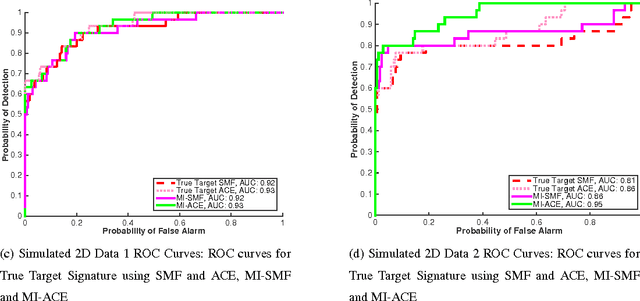



Abstract:In this paper, two methods for multiple instance target characterization, MI-SMF and MI-ACE, are presented. MI-SMF and MI-ACE estimate a discriminative target signature from imprecisely-labeled and mixed training data. In many applications, such as sub-pixel target detection in remotely-sensed hyperspectral imagery, accurate pixel-level labels on training data is often unavailable and infeasible to obtain. Furthermore, since sub-pixel targets are smaller in size than the resolution of a single pixel, training data is comprised only of mixed data points (in which target training points are mixtures of responses from both target and non-target classes). Results show improved, consistent performance over existing multiple instance concept learning methods on several hyperspectral sub-pixel target detection problems.
Multiple Instance Dictionary Learning for Beat-to-Beat Heart Rate Monitoring from Ballistocardiograms
Jun 11, 2017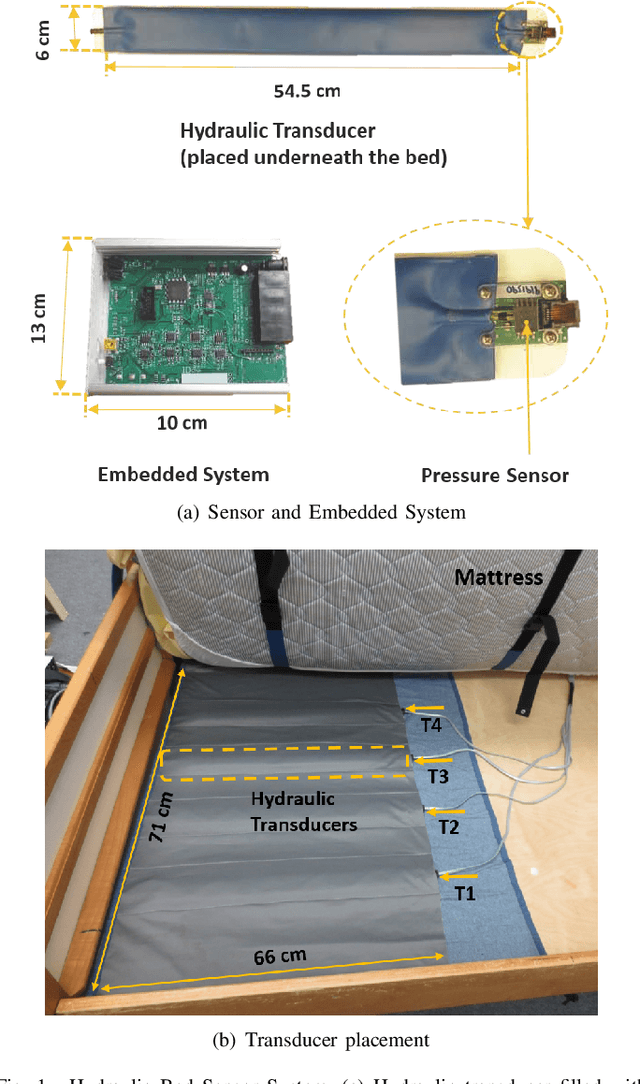
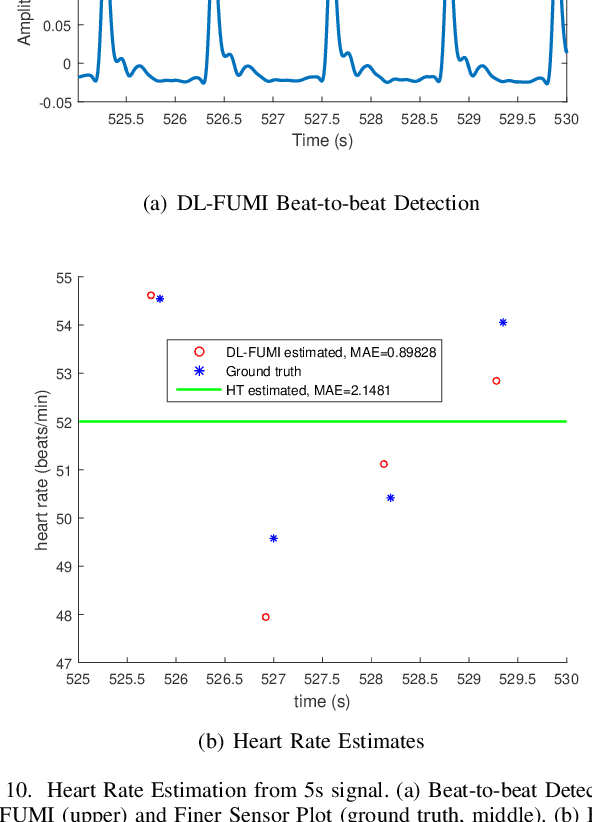
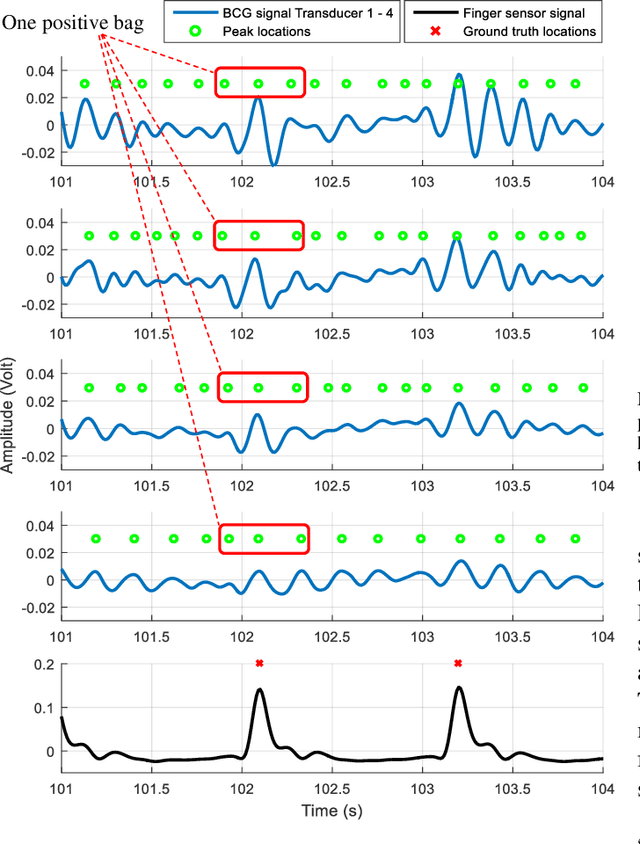
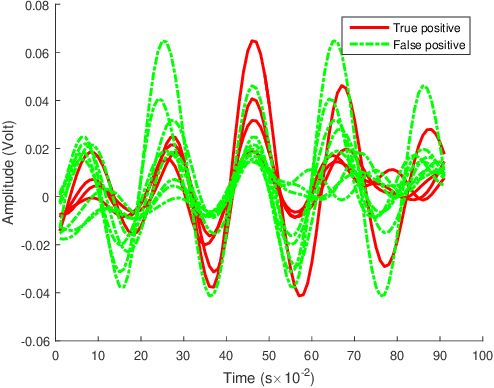
Abstract:A multiple instance dictionary learning approach, Dictionary Learning using Functions of Multiple Instances (DL-FUMI), is used to perform beat-to-beat heart rate estimation and to characterize heartbeat signatures from ballistocardiogram (BCG) signals collected with a hydraulic bed sensor. DL-FUMI estimates a "heartbeat concept" that represents an individual's personal ballistocardiogram heartbeat pattern. DL-FUMI formulates heartbeat detection and heartbeat characterization as a multiple instance learning problem to address the uncertainty inherent in aligning BCG signals with ground truth during training. Experimental results show that the estimated heartbeat concept found by DL-FUMI is an effective heartbeat prototype and achieves superior performance over comparison algorithms.
Multiple Instance Hybrid Estimator for Learning Target Signatures
Jan 09, 2017



Abstract:Signature-based detectors for hyperspectral target detection rely on knowing the specific target signature in advance. However, target signature are often difficult or impossible to obtain. Furthermore, common methods for obtaining target signatures, such as from laboratory measurements or manual selection from an image scene, usually do not capture the discriminative features of target class. In this paper, an approach for estimating a discriminative target signature from imprecise labels is presented. The proposed approach maximizes the response of the hybrid sub-pixel detector within a multiple instance learning framework and estimates a set of discriminative target signatures. After learning target signatures, any signature based detector can then be applied on test data. Both simulated and real hyperspectral target detection experiments are shown to illustrate the effectiveness of the method.
Multiple Instance Dictionary Learning using Functions of Multiple Instances
Aug 03, 2016



Abstract:A multiple instance dictionary learning method using functions of multiple instances (DL-FUMI) is proposed to address target detection and two-class classification problems with inaccurate training labels. Given inaccurate training labels, DL-FUMI learns a set of target dictionary atoms that describe the most distinctive and representative features of the true positive class as well as a set of nontarget dictionary atoms that account for the shared information found in both the positive and negative instances. Experimental results show that the estimated target dictionary atoms found by DL-FUMI are more representative prototypes and identify better discriminative features of the true positive class than existing methods in the literature. DL-FUMI is shown to have significantly better performance on several target detection and classification problems as compared to other multiple instance learning (MIL) dictionary learning algorithms on a variety of MIL problems.
Heart Beat Characterization from Ballistocardiogram Signals using Extended Functions of Multiple Instances
May 16, 2016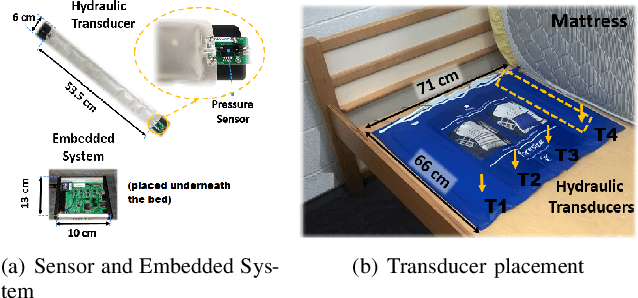
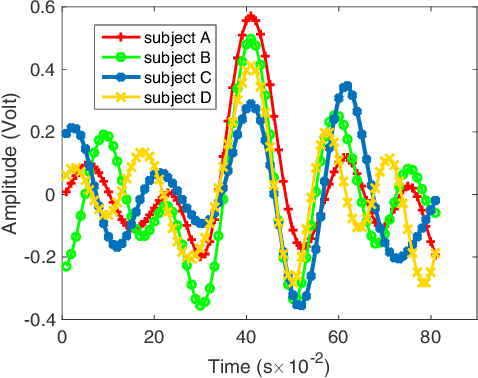
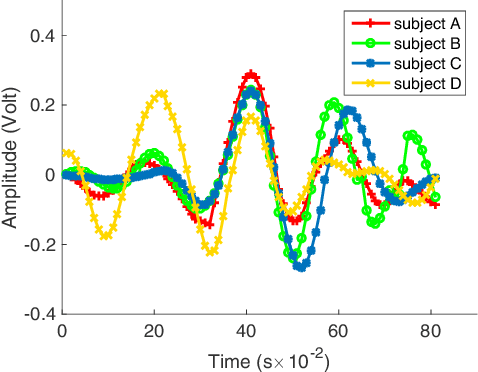
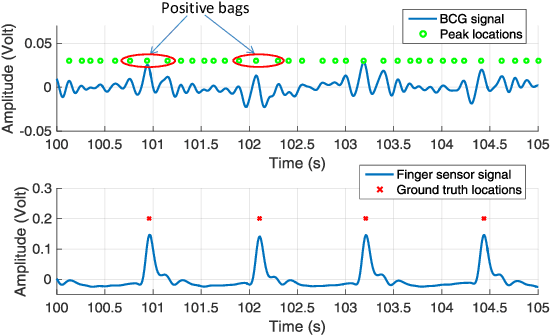
Abstract:A multiple instance learning (MIL) method, extended Function of Multiple Instances ($e$FUMI), is applied to ballistocardiogram (BCG) signals produced by a hydraulic bed sensor. The goal of this approach is to learn a personalized heartbeat "concept" for an individual. This heartbeat concept is a prototype (or "signature") that characterizes the heartbeat pattern for an individual in ballistocardiogram data. The $e$FUMI method models the problem of learning a heartbeat concept from a BCG signal as a MIL problem. This approach elegantly addresses the uncertainty inherent in a BCG signal e. g., misalignment between training data and ground truth, mis-collection of heartbeat by some transducers, etc. Given a BCG training signal coupled with a ground truth signal (e.g., a pulse finger sensor), training "bags" labeled with only binary labels denoting if a training bag contains a heartbeat signal or not can be generated. Then, using these bags, $e$FUMI learns a personalized concept of heartbeat for a subject as well as several non-heartbeat background concepts. After learning the heartbeat concept, heartbeat detection and heart rate estimation can be applied to test data. Experimental results show that the estimated heartbeat concept found by $e$FUMI is more representative and a more discriminative prototype of the heartbeat signals than those found by comparison MIL methods in the literature.
* IEEE EMBC 2016, pp. 1-5
 Add to Chrome
Add to Chrome Add to Firefox
Add to Firefox Add to Edge
Add to Edge